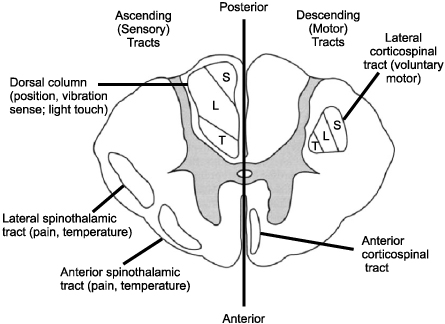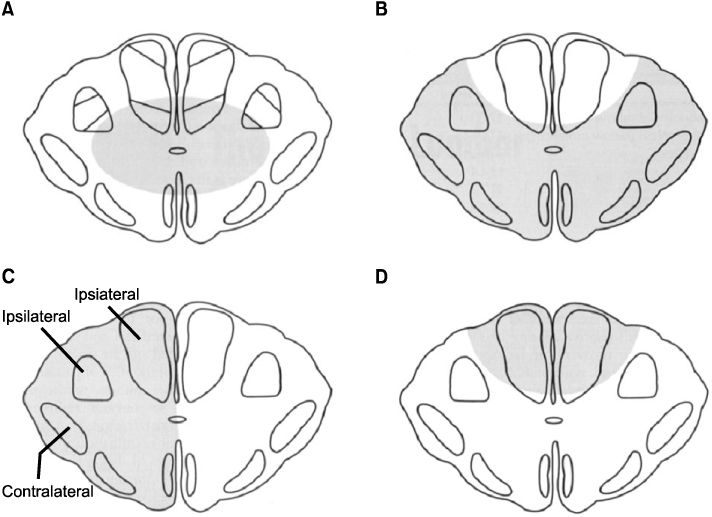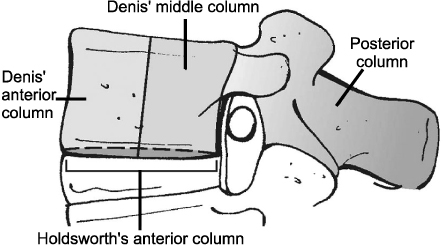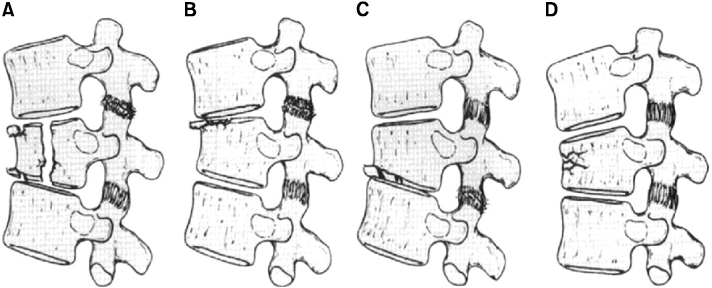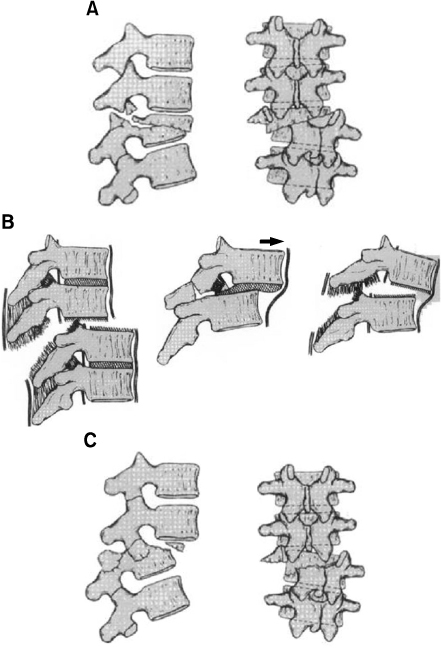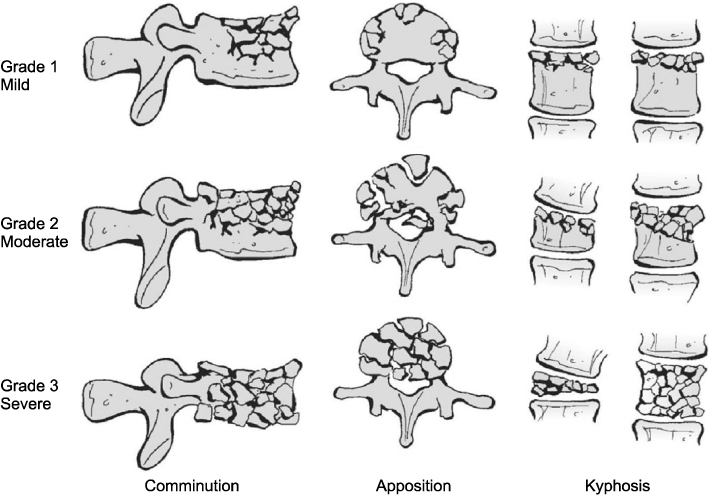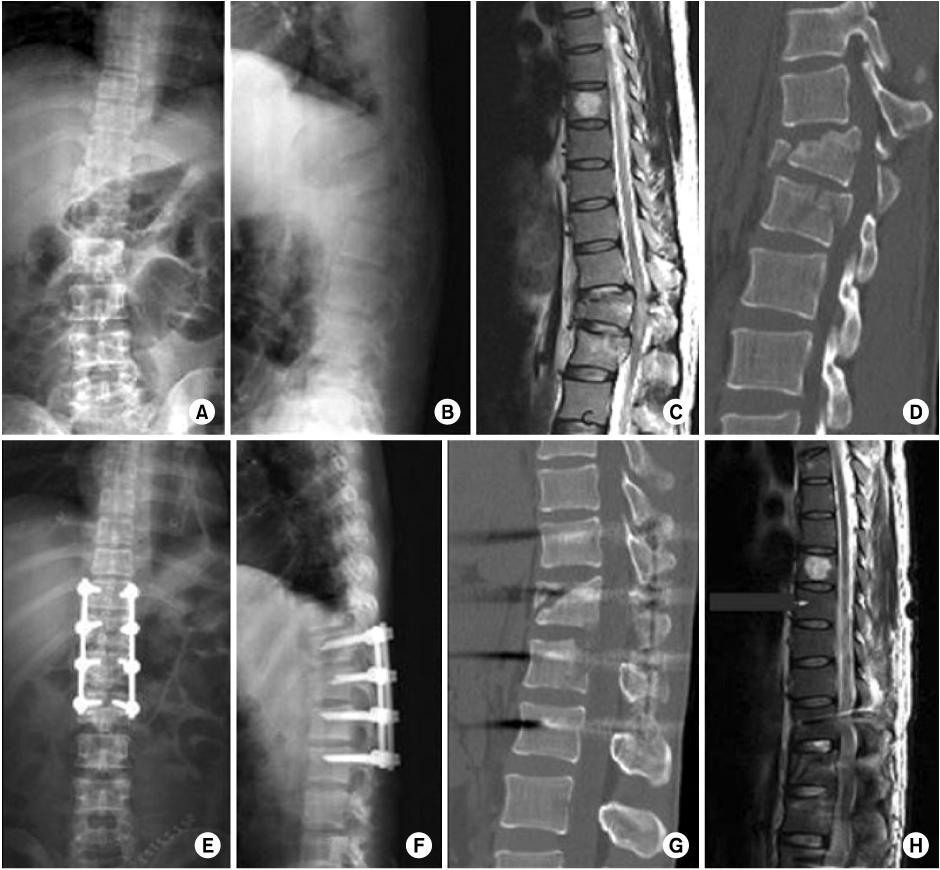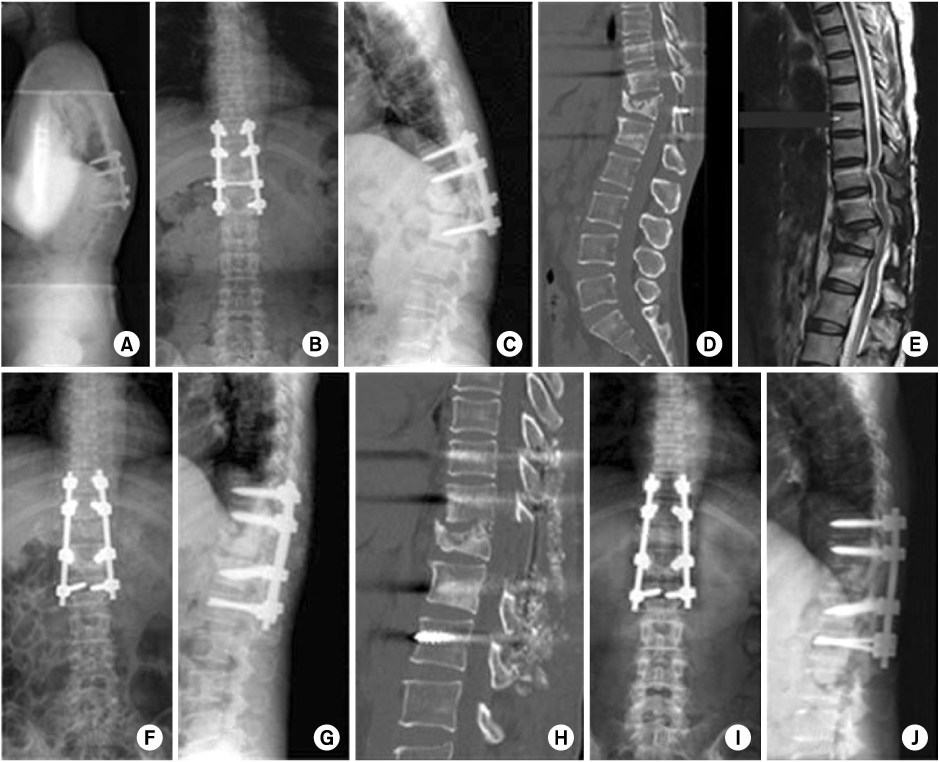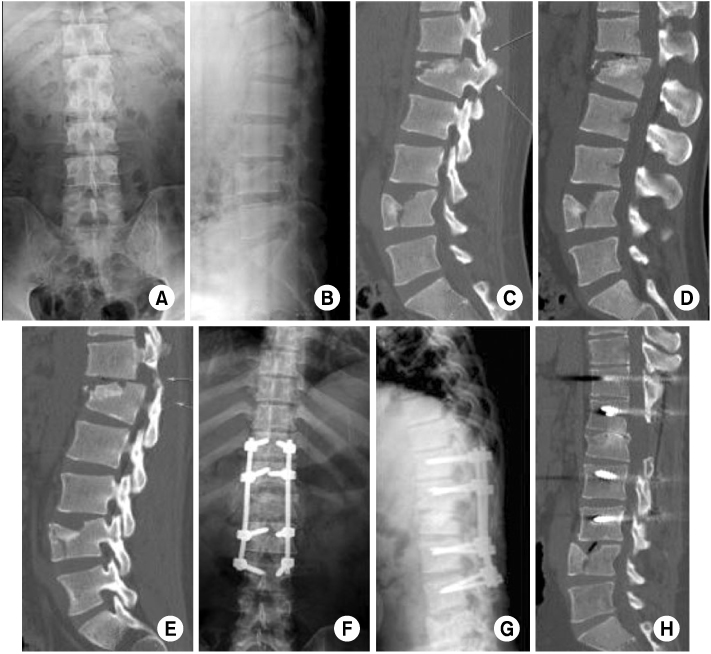J Korean Fract Soc.
2011 Apr;24(2):195-205. 10.12671/jkfs.2011.24.2.195.
Thoracic Spine Fractures
- Affiliations
-
- 1Department of Orthopaedic Surgery, Hangang Sacred Heart Hospital, College of Medicine, Hallym University, Seoul, Korea. ywkimmd@hallym.ac.kr
- KMID: 2183865
- DOI: http://doi.org/10.12671/jkfs.2011.24.2.195
Abstract
- No abstract available.
MeSH Terms
Figure
Reference
-
1. Andriacchi T, Schultz A, Belytschko T, Galante J. A model for studies of mechanical interactions between the human spine and rib cage. J Biomech. 1974. 7:497–507.
Article2. Bohlman HH, Kirkpatrick JS, Delamarter RB, Leventhal M. Anterior decompression for late pain and paralysis after fractures of the thoracolumbar spine. Clin Orthop Relat Res. 1994. 300:24–29.
Article3. Bradford DS, McBride GG. Surgical management of thoracolumbar spine fractures with incomplete neurologic deficits. Clin Orthop Relat Res. 1987. 218:201–216.
Article4. Denis F. The three column spine and its significance in the classification of acute thoracolumbar spinal injuries. Spine (Phila Pa 1976). 1983. 8:817–831.
Article5. Denis F, Burkus JK. Shear fracture-dislocations of the thoracic and lumbar spine associated with forceful hyperextension (lumberjack paraplegia). Spine (Phila Pa 1976). 1992. 17:156–161.
Article6. Ferguson RL, Allen BL Jr. A mechanistic classification of thoracolumbar spine fractures. Clin Orthop Relat Res. 1984. 189:77–88.
Article7. Geisler FH, Dorsey FC, Coleman WP. Recovery of motor function after spinal-cord injury--a randomized, placebo-controlled trial with GM-1 ganglioside. N Engl J Med. 1991. 324:1829–1838.
Article8. Gertzbein SD. Fractures of the thoracic and lumbar spine. 1992. Baltimore: Williams & Wilkins.9. Gertzbein SD. Scoliosis Research Society. Multicenter spine fracture study. Spine (Phila Pa 1976). 1992. 17:528–540.10. McAfee PC, Yuan HA, Fredrickson BE, Lubicky JP. The value of computed tomography in thoracolumbar fractures. An analysis of one hundred consecutive cases and a new classification. J Bone Joint Surg Am. 1983. 65:461–473.
Article11. McCormack T, Karaikovic E, Gaines RW. The load sharing classification of spine fractures. Spine (Phila Pa 1976). 1994. 19:1741–1744.
Article12. Oda T, Panjabi MM, Kato Y. The effects of pedicle screw adjustments on the anatomical reduction of thoracolumbar burst fractures. Eur Spine J. 2001. 10:505–511.
Article13. Reid DC, Hu R, Davis LA. Floman Y, Farcy JP, Argenson C, editors. The nonsurgical treatment of burst fractures. Thoracolumbar spine fractures. 1993. New York: Raven;215–222.14. Saboe LA, Reid DC, Davis LA, Warren SA, Grace MG. Spine trauma and associated injuries. J Trauma. 1991. 31:43–48.
Article15. Singh K, Kim D, Vaccaro AR. Herkowitz HN, Garfin SR, Eismont FJ, Bell GR, Balderston RA, editors. Thoracic and lumbar spinal injuries. The spine. 2006. 5th ed. Philadelphia: Saunders;1132–1156.16. Vaccaro AR. Combined anterior and posterior surgery for fractures of the thoracolumbar spine. Instr Course Lect. 1999. 48:443–449.17. Verlaan JJ, van Helden WH, Oner FC, Verbout AJ, Dhert WJ. Balloon vertebroplasty with calcium phosphate cement augmentation for direct restoration of traumatic thoracolumbar vertebral fractures. Spine (Phila Pa 1976). 2002. 27:543–548.
Article18. White AA, Panjabi MM. Clinical Biomechanics of the Spine. 1978. Philadelphia: JB Lippincott.
- Full Text Links
- Actions
-
Cited
- CITED
-
- Close
- Share
- Similar articles
-
- Twelve Contiguous Spinous Process Fracture of Cervico-Thoracic Spine
- The Value of Radionuclide Imaging as a Screening Test for the Diagnosis of an Acute Thoracic Spinal Fractures
- Spine Fractures in Patients with Ankylosing Spondylitis : Three Cases Report
- The Usefulness of Bone Scan in the Osteoporotic Vertebral Compression Fracture Patients Treated With Kyphoplasty
- Eleven Levels of Spinous Process Fractures in Thoracolumbar Spine

